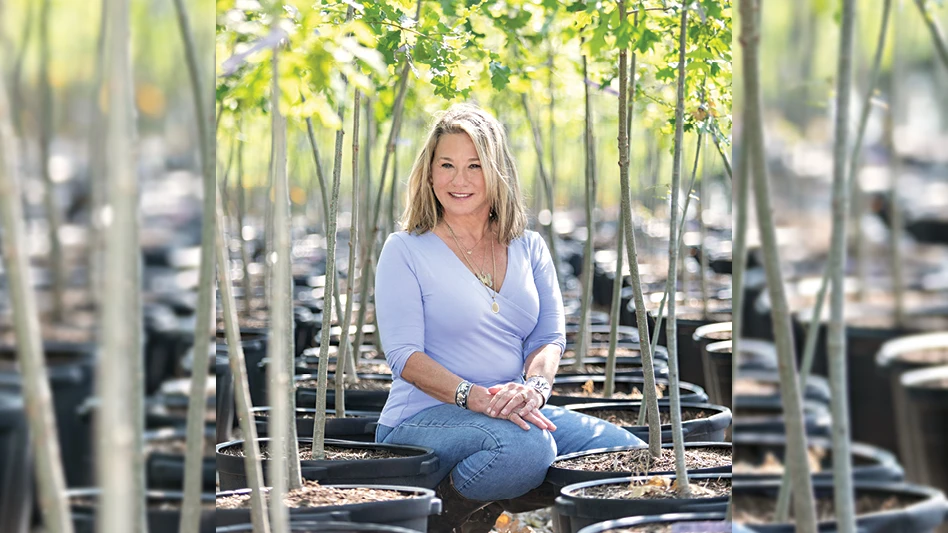 High-quality composts blended into growing media and applied to soils can promote plant growth and vigor and reduce soilborne disease risks. These renewable materials benefit plant quality and health by improving soil or growing medium physical and chemical properties, providing slow-release nutrients, and attracting and sustaining microorganisms that enhance nutrient uptake.
High-quality composts blended into growing media and applied to soils can promote plant growth and vigor and reduce soilborne disease risks. These renewable materials benefit plant quality and health by improving soil or growing medium physical and chemical properties, providing slow-release nutrients, and attracting and sustaining microorganisms that enhance nutrient uptake.
High-quality composts are not only compatible with conventional disease management products and conventional and organic-based nutrition programs, they can also enhance the performance and stability of microbial biopesticides. However, not all composts are suitable for improving plant growth and health. Ultimately, compost physical, chemical and quality characteristics should be used to determine the proper composts and amounts to use for optimum plant quality and health. Here are important points to consider about composts and some tips for selecting high-quality composts for use in growing media.
What to look for when considering composts
- A reputable compost producer. This is a company whose primary purpose is to provide growers with high-quality, safe and consistent finished compost, demonstrated by pride in their products, product performance and satisfied repeat customers. These are not operations whose primary business is collecting organic wastes for a fee, reducing waste volumes by composting, and selling processed wastes.
- Safe supply of feedstocks. Compost feedstocks come from organic waste streams. Before considering a compost for purchase, ask about the sources and safety of its feedstocks. The sources should be low in persistent health hazards including heavy metals, stable toxic molecules, and other enduring pollutants so that the finished compost product poses little to no health and safety hazards to workers, consumers, crops and the environment.
- Availability of chemical, physical and maturity analyses of compost batches. Producers of high-quality composts generally conduct frequent or batch analyses of chemical, physical and maturity properties of their finished composts. Results of these analyses enables compost producers to monitor and manage quality and provides potential and repeat customers information needed for proper selection and application of compost products.
- Consistent quality, physical and chemical characteristics. Batch to batch consistency translates into consistent performance and reliability.
- Mature and stable composts. These are composts that have completed mesophilic, thermophilic, and maturation phases of composting. The simplest indicators of compost maturity and stability are the amount of CO2 and ammonia released from composts. Complete compost analyses or simple kits like the Sovita compost maturity kits can indicate whether a compost is mature or not.
- Compost qualities and characteristics suited to needs of your crops. This includes appropriate particle sizes, pH range, micro and macro nutrient contents, and salinity.
- Absence of weed seeds and unsafe levels of pathogens (human and plant), heavy metals, and persistent pesticides in finished composts. Reduction or elimination of these risks prevents problems.
 What to avoid with composts
What to avoid with composts
- Feedstocks of questionable origin or with safety risks. It is important to worker, plant, and environmental protection to avoid composts made with feedstocks from waste streams with known chemical and biological hazards.
- Poor and inconsistent quality of composts lead to unsatisfactory or problematic performance and unpredictable results.
- Producers without recent or regular chemical, physical and maturity analyses of their compost products or the willingness to have them analyzed.
- Pyrolyzed or burned particles in finished composts. Pyrolyzed composts are those that have remained at 167°F (75°C) or greater long enough during compost peak heating for the complex organic matter to convert to charcoal-like particles. These burned particles are very brittle, adsorb or absorb conventional pesticides and fungicides, and immobilize plant nutrients. Hence, pyrolyzed compost particles do not maintain their structural integrity from repeated mixing or diminish effective concentrations of plant nutrients and conventional crop protection products.
- Immature and unstable composts. Problems from these materials range from enhancing plant diseases by providing additional food sources to plant pathogens to reducing soil pH to immobilizing plant nutrients in the soil because of their continued biological activity and coinciding demand for macro- and micro-nutrients.
- Ambitious, unproven marketing claims. “Controls diseases,” “induces disease resistance” and “replaces fertilizers” in advertising are unrealistic claims that often trap unsuspecting growers. Advertised disease control claims should be backed by efficacy research studies conducted with the actual products (not someone else’s). Furthermore, these products should be subjected to EPA and state registration processes that include meeting product safety, toxicology, and efficacy requirements.
There is a tremendous diversity of composts available to growers. High-quality, safe composts should be sought to provide the greatest benefits and fewest risks to growers. It is very important to try composts you select on a small scale first to determine whether or not they achieve the results you expect on your crops before using them on a large scale. When selected and used properly, these materials can improve plant growth and vigor and limit early contamination by soilborne pathogens.
Matthew S. Krause, PhD, is product development manager at BioWorks in Victor, N.Y.; mkrause@bioworksinc.com.

Explore the February 2014 Issue
Check out more from this issue and find your next story to read.
Latest from Nursery Management
- Ellen Mackenbach-Lakeman appointed new CEO of Dümmen Orange
- Southern Garden Tour sets 2025 dates for trial garden open houses
- New book explores plants that thrive in Rocky Mountains
- American Floral Endowment establishes Herman Meinders Memorial Tribute
- These companies are utilizing plastic alternatives to reduce horticultural waste
- NewGen Boxwood added to Proven Winners ColorChoice line
- Terra Nova releases new echinacea variety, 'Fringe Festival'
- American Horticultural Society names winners of 2025 AHS Book Awards





